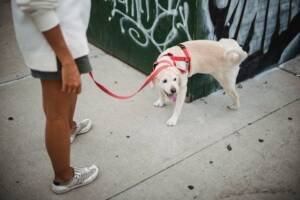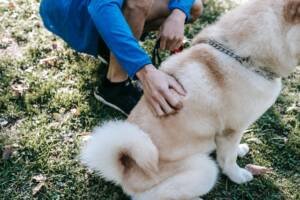We as pet owners take great pleasure in seeing that our canine companions remain healthy and content. Still, since our animal friends cannot speak out against their discomfort, we must recognise warning signs of disease early that our dog is not feeling well. And it is our duty to ensure our furry pals receive timely care and continue enjoying life to its fullest extent. Before we start, check out unemployed professors promo code from reddit users in case you need writing help!
1. Change in Eating Habits
An abrupt decrease or complete refusal of food could be a telltale sign that your pup is feeling under the weather, so any changes in their feeding patterns should be monitored closely, as these may point toward any underlying health concerns. On the other hand, excessive food consumption or thirst could indicate diabetes, renal illness, or digestive issues in dogs. So keeping an eye on their habits and seeking medical advice as soon as you detect any changes is critical for maintaining their wellbeing and overall health and wellbeing.
2. Lethargy and Unusual Behaviors

Pet owners should take note of an active dog that suddenly seems lethargic or displays unusual behavioral changes, including retreating, becoming less energetic, or refusing to participate in routine activities like playing or walks. Any noticeable differences should be reported immediately to a veterinarian as lethargy and behavioral changes could indicate medical conditions that need medical treatment; consult them immediately if these signs appear.
3. Digestive Issues
Dogs often suffer from digestive disorders that include diarrhea, vomiting, constipation, and difficulty passing feces. These symptoms could indicate that your pet is not feeling well, and any number of illnesses or indicate that your pup’s digestive system isn’t working as expected—these could include poor eating choices, parasite infections, or gastrointestinal illnesses. It’s therefore vitally important to keep an eye on their bowel movements and overall digestive health; should any persistent or worrying symptoms emerge, seek advice from a veterinarian immediately.
4. Respiratory Symptoms
If your dog is not feeling well and showing signs of respiratory distress by displaying symptoms such as coughing, wheezing, hard breathing, or nasal discharge – these could be signs of allergies, respiratory infections, or more serious illnesses like heart disease or pneumonia that should be addressed immediately by veterinarians to reduce complications and ensure your pup gets all of the support and care they require to ensure optimum respiratory health. You can support their respiratory health by keeping an eye on breathing patterns and visiting a veterinarian if you detect anything unusual.
5. Urination Changes

Dogs showing symptoms of urinary tract infections, bladder stones, or kidney issues could be showing changes in their urinating patterns, such as frequent or straining to pee, blood in their urine, or accidents at home. Therefore, owners must monitor these behaviors closely and seek professional medical help when anything seems off to get an early diagnosis and therapy course for your pup as soon as changes appear; urinary disorders can be uncomfortable and have serious health repercussions if left untreated – beware!
6. Altered Gait or Mobility
Changes to your pet’s stride or mobility, such as limping, favoring one leg over another, not jumping or climbing stairs quickly, or being stiff when they wake up, could be signs of arthritis, joint discomfort, or traumas affecting musculoskeletal systems. Paying close attention to their gait and consulting a veterinarian as quickly as possible when experiencing changes can bring relief and increased mobility; quickly responding to any changes must also occur, as early detection and treatment are vital in maintaining mobility and quality of life for pets.
Also read: Save your green grass getting damage from your dog’s urine
7. Behavioral Changes
A dog’s behavior, temperament, or attitude changes may indicate underlying discomfort or misery. In older dogs, behavioral changes, including restlessness, aggressiveness, vocalization, pacing, or excessive panting, may indicate discomfort, anxiety, or cognitive deterioration. Your dog’s quality of life can be improved, and they will receive the attention and assistance they require if you respond to behavioral changes early and seek veterinarian guidance.
8. Skin and Coat Changes

Alterations to your dog’s skin or coat, such as redness, dryness, itching, hair loss, or lumps/bumps, may be signs of parasites, dog skin allergies, infections, or dermatological problems that must be treated early. You can check for anomalies during routine grooming sessions or consult with a veterinarian if any changes in their coat appear; early treatment will keep them comfortable while helping avoid further issues later.
9. Weight Changes
Your pet’s unexpected weight fluctuations could be an early warning signal of hormone imbalance, metabolic diseases, or digestive troubles that require prompt action from you and veterinary consultation for proper care. Unexpected weight fluctuations can harm overall health and well-being; as soon as they appear, it’s important to take swift action—immediately contact a vet for an assessment and treatment plan as quickly as possible.
10. Changes to Eyes, Ears or Mouth
Infections, inflammations, or dental problems in your dog’s eyes, ears, or mouth may be signaled by redness in dog eyes, discharge, cloudiness, or strange scents in these areas. Regular check-ups with veterinarian care for any anomalies should they arise are crucial in keeping your pup healthy overall; any time changes occur in one or more areas, any changes must be addressed immediately and seen by a vet for diagnosis and treatment if needed – pain caused by issues in these areas left untreated may escalate and eventually result in serious health concerns in addition to pain in themselves!
Conclusion
Our responsibility as responsible pet owners lies in remaining vigilant about our dog’s well-being, from early disease detection and intervention through behavior analysis, diet tracking, or tracking physical signs such as inflammation. Staying aware can make a huge difference to the long-term health and happiness of both you and your canine friend!

